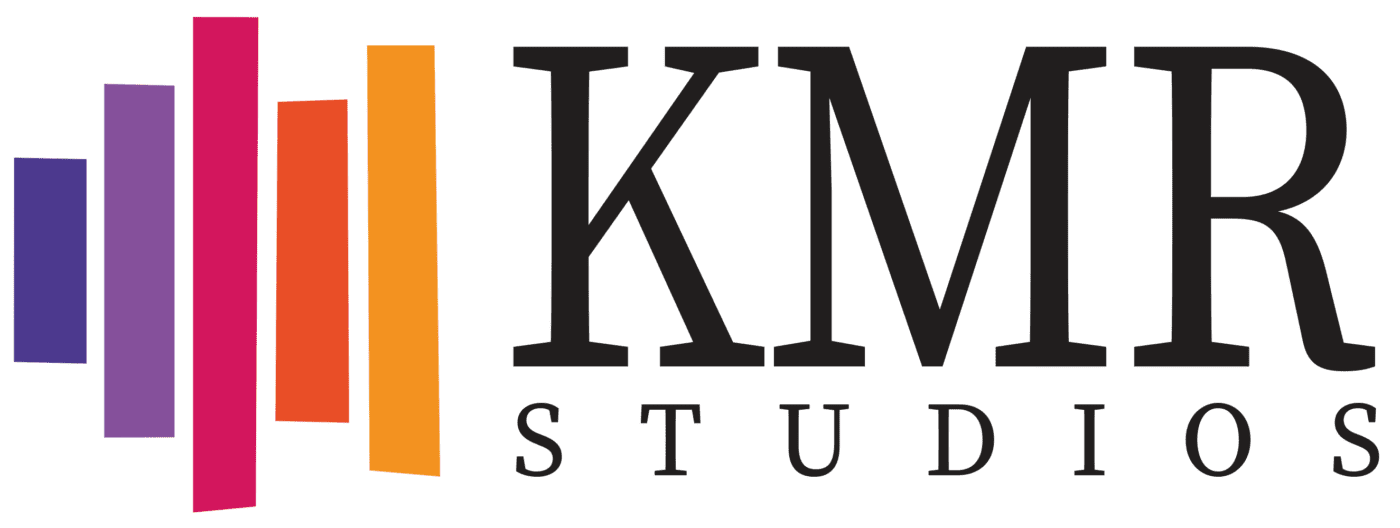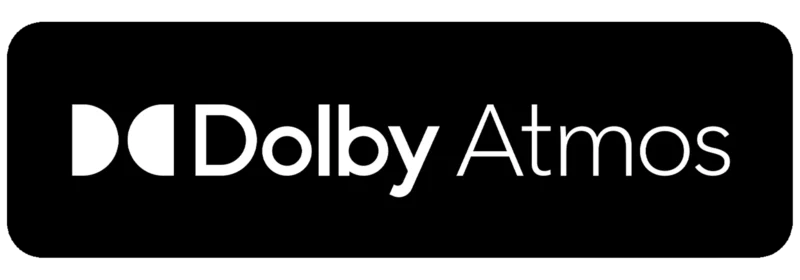In today’s digital world, it’s easy to get confused by all the available audio formats and how they affect the music we create and listen to. This article focuses on the 10 most common audio file formats, examining their relationship between quality, file size, and playability on different platforms and operating systems.
Article Contents
- Format Groups (3 different)
- Audio Formats (10 different)
- Summary
Format Groups
1) Uncompressed Format
The uncompressed format often takes up a large amount of space and is primarily used in professional audio work, as it reproduces your master exactly. It has a bit depth and sampling rate of at least 16 bits and 44.1 kHz. This provides a dynamic range of 96 dB and a frequency response of 22.5 kHz. We recommend working with 48kHz and 24 bits unless there is a specific reason to use a higher or lower setting. If you’re unsure which format is right for you, 48/24 is a good starting point as it works well in both music and film contexts. Pulse-Code Modulation (PCM) is the method used to create uncompressed files.
2) Lossless Compression Format
This format takes up less space without losing audio quality. The format separates repetitive and redundant data and “writes instructions” for these parts during playback. The file size can be reduced by up to 70% without any loss in quality or information. An example of this is .zip. A zip file is excellent for speeding up the uploading and downloading of files on platforms like WeTransfer and Dropbox. Zip files cannot be played directly but take up very little space. An example of a lossless format that can be played on any platform is ALAC, used by Apple Music.
3) Lossy Compression Format
Lossy is a compression format where some information in the file is discarded to reduce the overall file size, making it quicker to share or play. Streaming services often use this format as speed is prioritized over audio quality. The audio file is compressed by analyzing the information in the file and discarding the information that lies outside the majority of listeners’ hearing range.
The perceived quality of lossy files can range from indistinguishable from the uncompressed format to noticeably different. The differences can be attributed to various factors that will be discussed in this article.
10 Most Common Formats
Below are the most common audio file formats divided into their respective format groups.
Lossy
10. Ogg Vorbis
Ogg Vorbis is a lossy format that offers high audio quality relative to file size. Due to its efficient design, file sizes can range from 16-128 kbps/file (approximately 3MB for a 3-minute song). The compromise here is a slight loss in audio quality to ensure quick playback, even with a poor internet connection.
This format is not widely used, possibly because third-party software is required to play it. Surprisingly, Spotify uses this format for its streaming services. So if you use Spotify, you’ve been listening to Ogg Vorbis!
9. Windows Media Audio (WMA)
Originally expected to become the dominant lossy format, WMA has lost the excitement surrounding it. Objectively, it has better audio quality than many other lossy formats but not enough to capture the attention of most listeners. However, the format only works on Windows devices. If you have a Windows computer, it can be a good way to save storage without resorting to formats like MP3. But it’s not recommended if you share music with others.
8. MP3
MP3 is likely the most popular audio file format on this list. Its popularity lies in its flexibility, as it works on the majority of platforms and operating systems without the need for additional software.
MP3 is a lossy format, meaning the file is compressed. It is relatively forgiving in terms of which information is discarded, which can result in a perceived lack of quality compared to higher-quality formats. However, if you’re willing to sacrifice some quality for smaller file sizes and easier usability, MP3 is the format for you.
For music production purposes, we recommend avoiding this format as there is little to no benefit in using it. It’s easy to share large files via SMS, email, or services like WeTransfer and Dropbox.
Trivia: The name MP3 actually contains multiple hidden abbreviations: MPEG-1 Audio Layer III. The “3” refers to “Audio Layer III.” MPEG stands for Moving Picture Experts Group, the company that created the format. MPEG-3 is not the same as MP3.
7. Advanced Audio Coding (AAC)
AAC, a lossy format, debuted shortly after MP3 with the intention of being a better and more popular successor to the previous format. Despite AAC’s noticeably better quality, it didn’t “take off” in the same way as MP3. The format was developed by Apple, Dolby, and Fraunhofer.
AAC has similar platform support as MP3 but uses a more complex compression algorithm, resulting in less information being discarded. This format is used by Apple Music for users with poor internet connections or those who want to save mobile data. The default format on Apple Music is the lossless format (since 2021).
Lossless
6. Windows Media Audio (WMA)
Windows Media Audio (WMA) has both a lossless and a lossy format and is developed by Microsoft. The format can support up to 24 bits and 96kHz in sampling rate and reproduces the audio exactly. However, the compression algorithm results in larger file sizes compared to other lossless “competitors”.
Since the format is exclusive to Windows operating systems, you need specific software to play it. This format can be useful for saving backup files without occupying the same space as uncompressed formats, such as WAV. However, it’s not recommended if you share music with others.
5. Apple Lossless Audio Codec (ALAC)
ALAC is Apple’s lossless audio file format. Although it was initially developed only for Apple products, the ALAC code was released as open-source in 2011, making it easily playable on all operating systems.
Similar to the lossless WMA file, ALAC compresses the audio without discarding information. Instead, redundant information is categorized and unpacked when needed. However, ALAC supports up to 32 bits and a sampling rate of 384 kHz, which is better than WMA.
This format is a good option for reducing file size while maintaining high audio quality. All music on Apple Music is offered in this lossless resolution as long as you’re not using Bluetooth headphones. This is because Bluetooth technology does not support lossless formats. However, even with wireless headphones, Apple Music’s music quality is significantly higher than competitors like Spotify, thanks to the AAC format.
4. Free Lossless Audio Codec (FLAC)
FLAC provides the highest quality relative to file size on this list. It can reproduce files up to 32 bits and 192 kHz in sampling rate while reducing the size by up to 70% in many cases.
It’s worth noting that this format is not supported by Apple Music. It can be played on QuickTime, which is Apple’s preview program. This indicates that the format can be played on both PC and Mac, making it an option for sending smaller lossless audio files. However, there’s no significant advantage, so our recommendation is to stick with the uncompressed WAV format when working with music unless there’s a specific reason not to.
Uncompressed
3. Audio Interchange File Format (AIFF)
AIFF is the professional file format on Apple OS. It is a PCM (Pulse-Code Modulation) format, which neither compresses nor discards audio. Along with WAV, these formats dominate the world in terms of audio quality. They are widely used in professional mixing and mastering today. The only reason AIFF comes after WAV is that it didn’t gain as much popularity in the early days of the “digital music” era. AIFF files are identical in quality to WAV files.
2. Waveform Audio File Format (WAV)
WAV files are widely used in recording, mixing, and mastering as they are not limited in terms of bit depth and sampling rate. WAV is considered the definitive professional audio format, accounting for the majority of uploads to Apple Music, Spotify, and other streaming services.
When using this format, it’s important to consider that it takes up more storage space. If you need a format that doesn’t compromise on quality and is widely regarded as the best and most professional format, WAV is your best choice. With nearly unlimited cloud storage and the decreasing cost of storage, there are few arguments against sticking with this format throughout the entire music workflow, from production to sharing audio files and listening to music.
1. Audio Definition Model (ADM)
ADM is the format used to listen to Dolby Atmos. In reality, the format is like a combination of multiple WAV files working together to recreate a surround sound environment around the listener. The audio file contains a significant amount of information and is therefore remarkably large. A 3-minute song that is 50MB in stereo format can easily become 3GB after being mixed in Dolby Atmos. But with the large size come many advantages.
ADM is often used in conjunction with BWF (Broadcast Wave Format), which means the file also contains metadata required for playback with moving images.
We at KMR Studios are completely convinced that this will be the dominant audio format in the future because it does things no other audio or file format has been able to do. Thanks to all the information in the ADM file, the file can adapt to the available playback technology. It communicates with the player, determines which speakers are available and where they are in the room. Then, the audio is played back as the technician and artist intended in the studio, whether it’s through a soundbar in the living room, wireless headphones, or a cinema. ADM ensures that the sound is played back in the best possible way.
The music world is currently undergoing a revolution even bigger than when stereo was introduced. As a technician and artist, this is something you don’t want to be late to understand and take advantage of. KMR Studios is one of the few certified Dolby Atmos studios in Sweden, offering artists and companies assistance in creating, mixing, and releasing music, films, and games in the audio format of the future: Dolby Atmos.
Summary
Although this article has listed the formats based on technical factors, your own opinion ultimately matters most. However, it’s good to consider your operating system, storage space, and who will be listening to the audio file, as this can help you choose a format.
If you’re recording, mixing, or mastering, it’s essential to use the uncompressed WAV format. Although MP3 may appear to be a commonly used format with its small file size, it’s recommended to establish a workflow that completely avoids this format.
Apple Digital Masters
Apple’s love for music is evident with initiatives like Apple Digital Masters. To ensure that the music released is of the highest quality, Apple has introduced the specification Apple Digital Master, indicating that studios meet Apple’s requirements. We at KMR Studios are proud to be one of these certified studios!
To delve deeper into what this means for you, you can read the article What is Apple Digital Masters? or take a course with us!
Training Music StudioContact us

CONTACT US
OUR PORTFOLIO
LISTEN IN DOLBY ATMOS
LISTEN IN STEREO

 Svenska
Svenska





